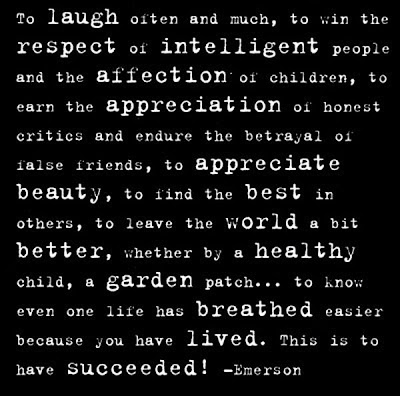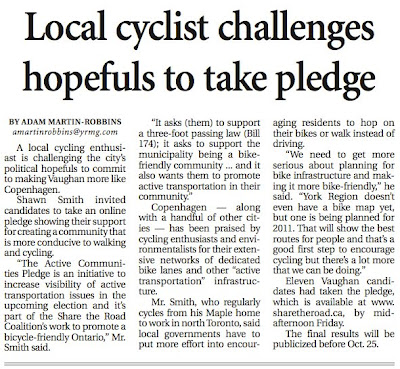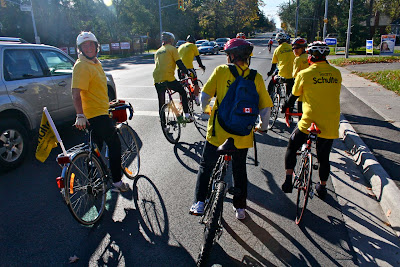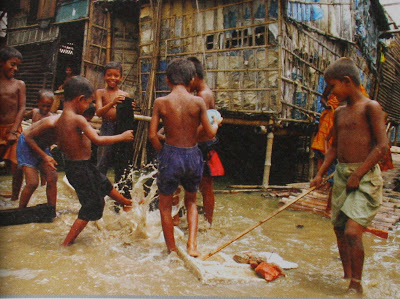Why can't the drivers of cars and bikes get along, as they do in the crowded cities of Europe?
From bicycle-mad Paris to rush-hour New York and the back alleys of Toronto, the CBC documentary Pedal Power takes a ride through the changing world of bike culture. Watch it online here. It's worth it!

Bicycles and automobiles have to share the same roads - a recipe for conflict - and many potential cyclists just won't ride in the city because they see it as too dangerous. Add in the plague of bike theft and a lot of cyclists are simply leaving their bikes at home.
In Canada, bicycles "don't get no respect." From the story of Igor, and the anatomy of the underground world of bike peddlers in Toronto, this film spins out to how other cities are making riding safe. Using innovative "bike-cam" techniques to convey, up-close, the sensation of bike riding, a series of character-driven mini-narratives propel the film through a study of what makes a city "bikeable". Whether it's the public bike program in Paris, bike mega-garages in Amsterdam, bike paths in Vancouver and Montreal, or the surprising leadership of New York City, we follow the story of this remarkable little conveyance as it wheels though the first decade of the 21st century.





























